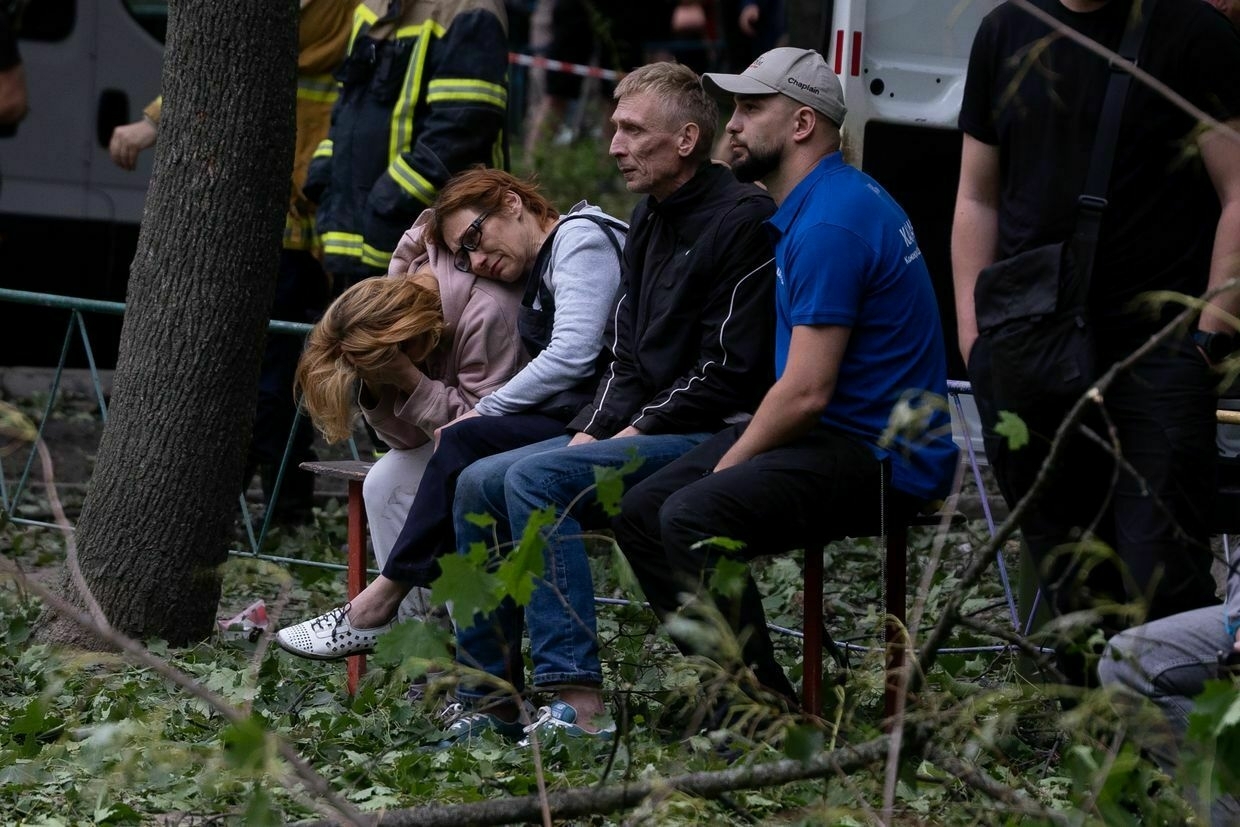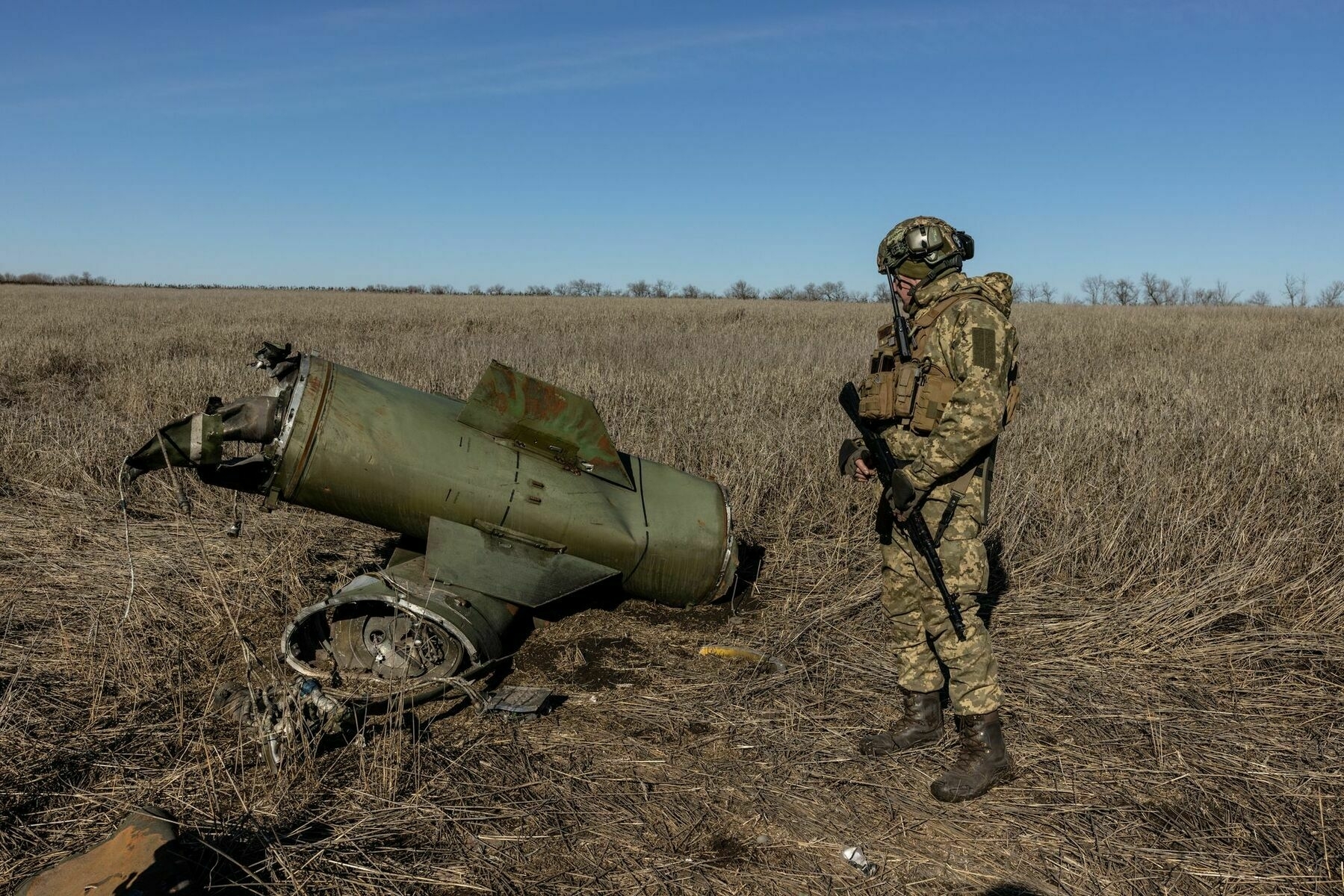
Ukraine announced on June 13 that it’s short-range Sapsan ballistic missile would go into mass production, a major development in Kyiv’s ongoing efforts to domestically produce the weapons it needs to fight Russia’s full-scale invasion.
As Ukraine faces growing challenges in securing weapons from Western partners, and Russia continues launching drone and missile strikes on civilians, the development of Ukraine’s missile production is seen as a critical step toward strengthening its defense capabilities.
“The very emergence of domestic ballistic missiles is a bold political statement — a big, fat middle finger to the Kremlin’s claims that Ukraine must be demilitarized,” Defense Express military expert, Ivan Kyrychevsky, told the Kyiv Independent.
What is a ballisitic missile?
Unlike cruise missiles which are jet engine powered and fly in a relatively flat trajectory, ballistic missiles are rocket-powered and launched high into the atmosphere before arcing back down onto their target.
They’re only guided during the initial stages of launch, so they can be less accurate than cruise missiles, but have the advantage of reaching incredibly high speeds — sometimes more than 3,200 kilometers per hour — as they approach their targets.
“There are no red lines of escalation if the Russians themselves are striking with ballistic missiles directly and continuously at residential buildings.”
As such, they are more difficult to intercept — only the most advanced air defense systems are capable of shooting them down, the U.S.-made Patriot system being one of them.
Russia uses them to devastating effect in Ukraine — during the latest mass attack on Kyiv on June 17, at least 10 people were killed and scores more injured, many of them when a ballistic missile partially destroyed a residential building.


What do we know about the Sapsan ballistic missile?
The latest development is that it has successfully completed combat testing and is in the process of serial production, but it is not known when the missiles will be seen in regular use on the battlefield.
The missile completed testing in May after successfully striking a Russian military target at a range of nearly 300 km, Valentyn Badrak, head of the independent Ukrainian think tank, the Center for Army, Conversion and Disarmament Studies, told Liga.net.
"We will have to make ballistic missiles because there is nowhere else to get them."
Kyrychevsky said that the exact technical specifications of Sapsan are not clear, as revealing this information would play into Russia's hands, though he believes the missile can reach further than 300 kilometers.
The missile’s payload appears to be particularly significant, with reports indicating a warhead weight of over 480 kilograms.
Federico Borsari, a Resident Fellow with the Transatlantic Defense and Security Program at the Center for European Policy Analysis (CEPA), told the Kyiv Independent that "it is a very big warhead, which means that Ukraine is prioritizing strike power over range."

In terms of targets, such a large warhead should make it effective against pretty much anything within its range.
"There’s always a trade-off in missile design. The heavier the warhead, the shorter the range. Ukraine wants to have a very powerful strike weapon to destroy any targets on Russian territory but within 300—500 kilometers," he said.
Ahead of the rest of Europe
"Ukraine is the first European country since the Cold War that is producing a conventional ballistic missile again," Fabian Hoffmann, a defense expert and doctoral research fellow at the University of Oslo, told the Kyiv Independent.
According to Hoffmann, Ukraine is "definitely ahead of the rest of Europe" as no other European country produces conventional short or medium-range ballistic missiles.
France is the only European country currently producing ballistic missiles, and even those are sea-launched intercontinental ballistic missiles (ICBMs) intended solely for nuclear deterrence. The United Kingdom, while part of the nuclear club, does not manufacture its own ballistic missiles.
Hoffmann added that Western countries definitely knew that Ukraine was working on a new missile, and there was some "hesitation and concern" about Kyiv obtaining this sort of offensive strike ability, and Russia's possible escalation of the war in reaction to their use.
"But I think especially over the last months, there is a consensus that if it's a Ukrainian weapon that is built inside Ukraine, by Ukrainian engineers, and operated by Ukrainian personnel, then it's not really something that Western partners want to get too involved with," Hoffmann said.
Kyrychevsky sees the development of a new Ukrainian missile as a no-brainer given the current geopolitical uncertainties facing Ukraine.
"The Americans are running out of missiles, and they are not ready to give them to us. European partners have no ballistic missiles of their own," he said, adding: "We will have to make ballistic missiles because there is nowhere else to get them."
Kyrychevsky dismissed any concerns over Russian escalation, saying there are no red lines to cross if Russia is already "striking with ballistic missiles directly and continuously at residential buildings."
Breaking through Russia's air defence
According to Borsari, Russia's air defense performance against missiles has improved since 2023, particularly in response to Ukrainian strikes with Western-supplied weapons such as Storm Shadow and ATACMS.
"Russia has anti-ballistic missile defense systems like the S-300 and S-300V4, including anti-ballistic missile capabilities. In particular, the S-300 PM was specifically designed to intercept ballistic missiles," he said.
"Russia has the resources and the technology to intercept the ballistic missiles simply because they had to deal with this type of potential threat during the Cold War," he added.

Although Russian air defense has become more effective against known systems, the new missile may catch them off guard, at least temporarily. Russia will need time to update its tracking software and integrate this new threat into its defense network.
"That won’t happen overnight. Each side learns and adapts. Russia is learning, and so is Ukraine," Borsari said.
"Sapsan is a very good development for Ukraine," he said. "Until now, Ukraine didn’t have an indigenous and domestic ballistic missile in its arsenal, apart from semi-ballistic ATACMS provided by the U.S. in 2023."
Hoffmann added that the new missile can make a difference, depending on how accurate it is and how easy it will be for Russian air defense to intercept it.
"We see in the Middle East right now that Iran has a lot of ballistic missiles, but they are inaccurate. They have to launch a massive amount of it in order to potentially hit the targets. And still there's no guarantee," Hoffmann said.
Russia also face a problem of geography — its vast landmass means it simply doesn't have enough air defense systems to cover all of its territory so it will likely have to prioritize defending some areas over others.
Scaling up production
Hoffmann said that Ukraine faces major challenges in scaling up missile production, as large above-ground factories would be easy targets for Russian strikes.
To protect this critical infrastructure, Ukraine likely needs to build underground facilities, which is a complex, costly, and time-consuming endeavour.
Borsari added that the production will take time, but if Ukraine can manage to produce at least 80 to 100 missiles per year, it would have a decent amount to conduct strikes against Russian targets.
Ukraine's domestic weapons production
Ukraine has continued to increase domestic weapon production. Zelensky said on April 16 that over 40% of the weapons used at the front line are now produced in Ukraine, including over 95% of the drones used at the front line.
Zelensky also previously revealed that Ukraine had developed another domestic-made weapon, a missile-drone Palianytsia.

Ukraine's Defense Minister Rustem Umerov said in late 2024 that Ukraine also resumed and scaled up serial production of Neptune cruise missiles, modifying them to have a greater range.
As Ukraine attempts to increase its defense production, Russia has continued to unleash large-scale attacks on Ukrainian cities, regularly launching hundreds of drones to overwhelm Ukrainian air defenses.
And Moscow is only building more and more — Ukraine's military intelligence (HUR) told the Kyiv Independent earlier this month that Russia's production of ballistic missiles has increased by at least 66% over the past year.
Hi, this is Yuliia. Thank you for reading this article. The Kyiv Independent doesn't have a wealthy owner or a paywall. Instead, we rely on readers like you to keep our journalism funded. If you liked this article, consider joining our community today.
 The Kyiv IndependentDaria Shulzhenko
The Kyiv IndependentDaria Shulzhenko
